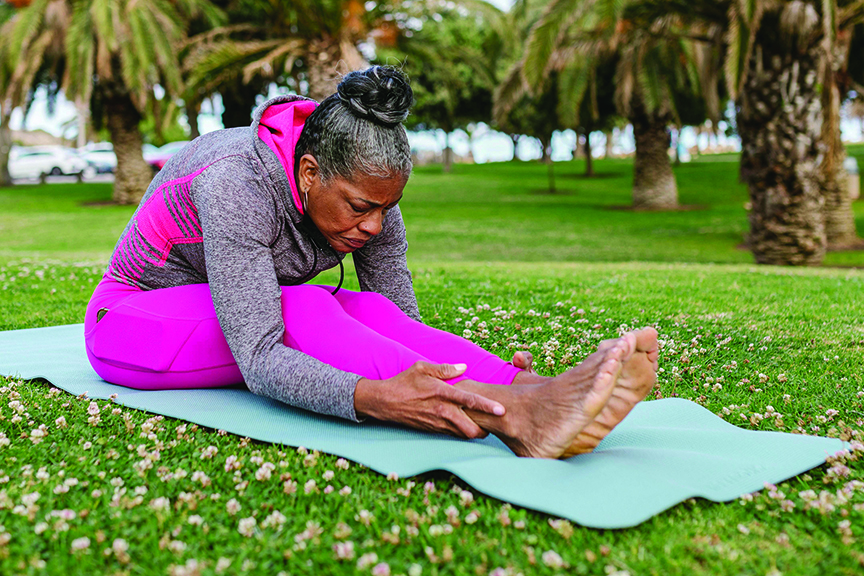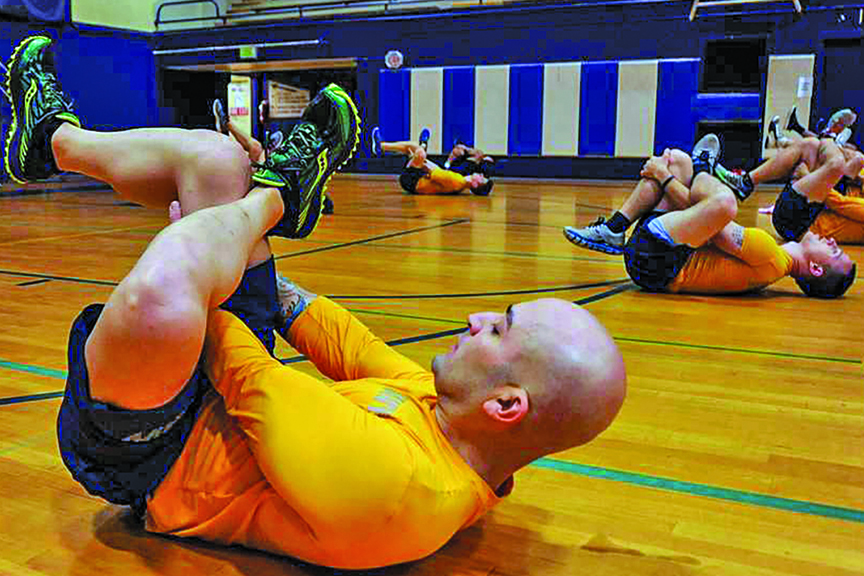How the body’s range of motion can make or break you
October 2025

A seated foward fold. You don’t need to be athletic to improve flexibility.
by Vanessa LaFaso Stolarski, Contributing Columnist
For anyone engaged in on-the-job physical labor, whether scaling a utility pole or hauling hay bales, physical flexibility often takes a back seat to strength. However, in industries like electrical work and agriculture — where the body is constantly tested by lifting, reaching, twisting and crouching — limited flexibility can quietly set the stage for serious injuries. Even daily routines like cleaning, gardening or vehicle maintenance can invite injury, if physical range of motion is limited.
WHY FLEXIBILITY MATTERS
Jobs in agriculture and other trades involve physically demanding movements throughout the day. These repetitive movements, when muscles and joints are stiff, cause the body to compensate with poor mechanics. Over time, these movement patterns can lead to strains, sprains and chronic pain. Tight hamstrings, for example, can pull on the lower back during lifting. Restricted hips can limit the knee’s range of motion, and stiff shoulders can turn routine overhead work into a recipe for rotator cuff injuries.
GENTLE MOVEMENTS FOR IMPROVED FLEXIBILITY
You don’t need to be athletic to improve flexibility. Try these beginner-friendly stretches targeting the vulnerable areas for most active workers. As your body adapts to these, try the progressions to expand your practice and range of motion. Start each stretch gently, holding each for 15 to 30 seconds and repeating them two to three times per side. Remember, stretching should never be painful — mild tension is enough to spark change.
HAMSTRINGS: SEATED FORWARD FOLD
- How: Sit with legs extended, hinge at the hips and reach toward your toes. Keep your back straight and stop when you feel mild tension in the hamstrings.
- Modify: Too difficult? Bend slightly at the knees or use a band or towel around your feet to hold on to.
- Progress: As you loosen up, try a standing forward fold for a new challenge.
SHOULDERS/PECTORALS: DOORWAY CHEST STRETCH
- How: Stand in a doorway, place forearms on each side and lean forward until you feel a stretch across your chest and shoulders.
- Modify: Take a small step forward with one foot into a lunge position. Lean only as far as the discomfort allows.
- Progress: Raise your arms higher on the frame to target upper chest, or stretch one arm at a time for deeper release.

Figure Four stretch
HIPS: FIGURE FOUR STRETCH
- How: Lie on your back, cross one ankle over the opposite knee and gently pull the uncrossed leg toward your chest.
- Modify: Do it seated and gently press down on the bent knee to open the hip.
- Progress: Increase hold time as your hips become more mobile.
SPINE: CAT-COW STRETCH
- How: On hands and knees, alternate arching your back like a cat and dipping it like a cow, moving slowly while breathing deeply.
- Modify: Lie on your back and alternate between arching and curling up your knees.
- Progress: Add a gentle twist by threading one arm under the other and laying the shoulder on the floor to open the upper back further.
Vanessa LaFaso Stolarski is a certified nutrition counselor, weightlifting coach, life coach and stress-management specialist.
All health-related content and media provided by Cooperative Living or its website(s) is created and published for informational purposes only. It is not a substitute for professional medical advice and should not be relied on as health or personal advice. Always seek the guidance of your doctor or other qualified health professional with any questions you may have regarding your health or a medical condition.
